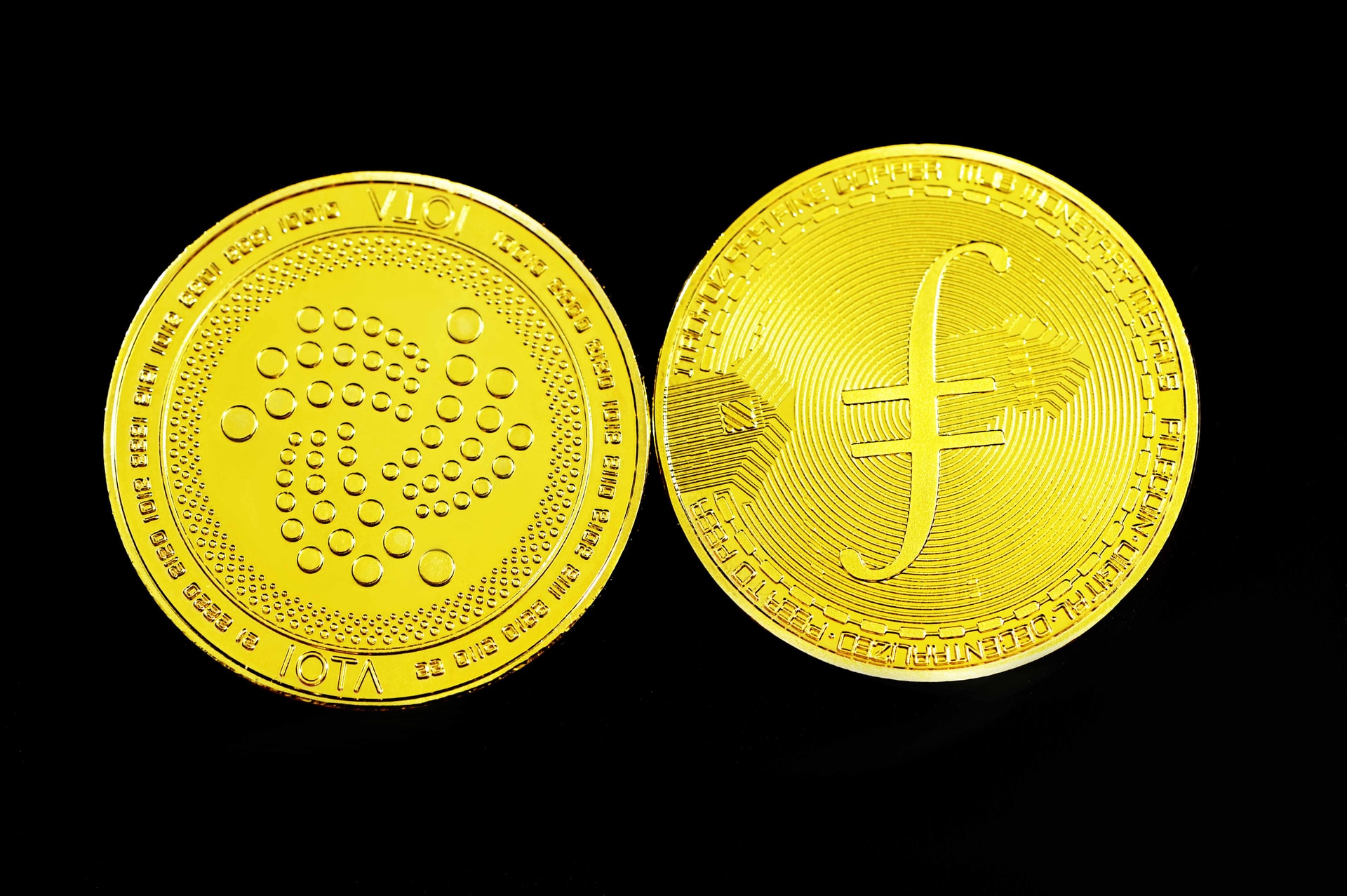Sharing your personal space and belongings is all the rage nowadays. For example, many people rent out extra rooms or finished basements on Airbnb. Others make their cars or RVs available to strangers who need vehicles in a pinch.
Along those same lines, Filecoin is a cryptocurrency that gives users a way to put extra space on their computers to use. But what, exactly, does that mean? And how does Filecoin gather storage from computers around the world and share it with others?
To get the answers to these questions and more, join me as I discuss Filecoin, one of the most exciting cryptocurrency projects on the market.
What is Filecoin?

Filecoin – which you’ll see listed as FIL – is a blockchain that lets users share their storage space in a peer-to-peer fashion. Through the Filecoin blockchain, data transactions between users are recorded and permanently stored. As a result, users who store their files through the Filecoin network know their data is safe, secure, and accurate.
Storage availability and the price of said storage are dependent on the market. So, if you have valuable data that requires additional bandwidth or more space, then you might have to pay a higher fee than you would if you were storing a smaller file.
Since FIlecoin has its own network and doesn’t rely on Ethereum or any other blockchain, – the network has its own FIL tokens. These tokens are used to manage the Filecoin network. Additionally, FIL coins offer incentives for participants of the platform while providing governance for the blockchain.
Who Created Filecoin?
I don’t know about you, but when I’m researching a cryptocurrency, I like to learn more about who invented the coin and why. With that in mind, Protocol Labs developed Filecoin and launched its initial coin offering (ICO) in 2017. At the time of its ICO, FIlecoin tokens were worth USD 1.30 each.
Many people don’t know that the Filecoin launch was among the largest ICOs in crypto history. The project raised USD 257 million. What’s even crazier is that USD 186 million of that was raised within the first hour of the ICO going live.
Unfortunately, the launch was shrouded in controversy as Filecoin only allowed accredited investors to participate in the ICO. Protocol Labs only sold its tokens to these investors, which meant they were the only ones who were able to receive FIL at launch.
When the genesis block was created (the first block of the blockchain), 30% of the FIL tokens were put back into the project. 15% were assigned to the development team, which serves to drive growth and innovation for the Filecoin project. 10% were given to investors, while the other 5% was designated to the Filecoin Foundation.
Over the next 15 years, the remaining 70% of the token supply will be given to nodes on the platform in the form of fees and rewards for data storage and block confirmation.
How Does Filecoin Work?

Understanding how Filecoin works might sound complicated; however, it’s not too bad once you start using it. For starters, Filecoin uses the InterPlanetary File System protocol, often referred to as IPFS. In addition, this peer-to-peer network uses a decentralized platform, which means no central authority oversees it.
If a user has personal data they want to store on the FIlecoin network, they simply select a storage miner, then pay them in FIL tokens. For those unfamiliar with the term ‘miner’ in relation to cryptocurrency, a miner is a computer that stores the data and files of other users. These computers are used to secure the Filecoin ecosystem.
Since the Filecoin platform is decentralized, files are maintained in a trustless manner. This means no trust is required to confirm the legitimacy of the users. Everyone verifies everyone else. Because of this, users can select the miner that most closely matches their needs. For example, if you want to save money, you might choose a miner that has plenty of storage but isn’t very fast. Or, if speed is of the essence, you may have to pay a little more in FIL.
FIL tokens
Developers can create dApps, also known as decentralized applications, to integrate with the FIlecoin network. With the dApps, users can store additional data using the FIlecoin platform and do so with their use. I don’t know about you, but that sounds like a pretty sweet deal to me.
At this point, miners validate these deals, which earns them FIL fees for participating on the network. This happens when a new block is added to the Filecoin blockchain, which happens every 30 seconds.
Plus, with Filechain, what data is submitted, users have the ability to confirm that everything is accurate through proofs. If you’re not familiar with proofs, these are a way to verify the validated algorithms submitted via the miners. That means I can quickly verify that everything is on the up and up anytime I want.
Consensus mechanism
The consensus mechanism used by Filecoin is called Proof of Replication, or PoRep. With this type of consensus, FIlecoin shows that miners have successfully received the stored data as requested and provided unique coding for it.
By using PoRep consensus, Filecoin is creating timestamped confirmations that all data on their network is received. This gives the platform its trustless feature, which is important to any blockchain in the industry. Once the transaction is confirmed, miners on the platform verify the data to ensure that it is being stored safely and securely.
How is Filecoin Different?

One of the hardest things about choosing a storage system is finding one that isn’t entirely centralized. I think Google and Microsoft do a great job of storing my data, but how much do I really trust them? That’s why decentralized projects like Filecoin are so important.
With Filecoin, users have the ability to keep their private data on a peer-to-peer platform. This type of decentralized network lends itself to being more prepared against hackers and more resilient against outages or censorship. The platform also offers enough incentives to its participants to ensure honest and trustworthy behavior.
Filecoin is also different from other blockchain projects through its architecture. While other blockchains typically only employ one node type, Filecoin uses two types: storage nodes and retrieval nodes.
Storage nodes are just what they say they are. Nodes are used to store information on the Filecoin network. To provide a decentralized platform, Filecoin uses a wide array of medium-sized storage nodes. Retrieval nodes, on the other hand, require low latency and high bandwidth. Therefore, Filecoin pays retrieval nodes when they can quickly locate a file and retrieve (get it?) it for the end-user.
Additionally, Filecoin gives its users a one-of-a-kind competitive business model. Those who host or upload content can bid on a market to earn the right to store data. Bidding helps produce a competitive marketplace for end-users, which results in fair – and cheaper – storage prices.
How is Filecoin Value Determined?

For those unfamiliar with Filecoin, the project was among the first cryptocurrencies to go to market, meeting all the legal and regulatory requirements outlined by the US SEC (Securities and Exchange Committee). As a result, Filecoin was more appealing to investors than other more volatile and less-regulated cryptocurrencies.
It also didn’t hurt that Protocol Labs was already an established and well-known brand. This type of recognition helped drive investors and tech-minded individuals to participate in the network’s launch.
Filecoin’s token, FIL, is designed to help operate and maintain the project’s blockchain. As a result, users understand the value of participating in the network. Doing so allows Filecoin to create a purely decentralized and peer-to-peer network for anyone who wants to store their data, run nodes, or create transactions.
Filecoin (FIL) Supply
At the time of writing, FIlecoin has a circulating and total supply of 127,358,264 FIL. The project has indicated that it has a cap of 2 billion tokens. While the Filecoin maximum won’t ever be increased, it could decrease if enough users or nodes partake in bad behavior.
That doesn’t mean a user does something you disapprove of. It means they’re not doing their part to make the network successful, whether that be as a storage node or a retrieval node. When this happens, Filecoin can confiscate their FIL tokens and burn them.
If you want to get your hands on some FIL tokens, you have a few options. You can purchase them through the secondary market on cryptocurrency exchanges like Binance, Coinbase, and Kraken. Or you can earn them by participating in the network, either as a storage node or a retrieval node.
Is Filecoin Secure?

One of the biggest concerns I had when getting into the world of cryptocurrency centered around security. Are projects secure? How do they ensure that data and funds are protected? For Filecoin participants, honesty and security are paramount as they must provide accurate and timely data for users.
In an effort to minimize bad actors or lax nodes, the platform uses multiple features to encourage participation. For example, if you want to be part of the Filecoin network, you have to provide collateral up front. This shows Filecoin that you’re serious about being part of what they’re doing.
Additionally, when a node earns a block reward, they are subject to a vesting period. This helps ensure nodes stick around long enough to earn their rewards while honoring commitments made on the network. The platform also requires all miners to submit PoReps, which validates all data that comes across the blockchain. So it’s clear that Filecoin does its due diligence.
Finding the Right Wallet

Not all cryptocurrency wallets are the same. There are hardware wallets and software wallets. Desktop wallets and mobile wallets The type of wallet you want will depend on how you plan on using your FIL and how much you need to store.
For example, if you plan on storing your tokens, the most secure wallet is a hardware wallet, also known as a cold wallet. These types of wallets are physical devices on which you keep your digital assets. The most popular among these is Trezor or Ledger. Keep in mind if you’re not familiar with crypto, it might take some time to learn how to use these devices, but they’ll keep your funds safe and secure.
Another good way to store your Filecoin is with a software wallet. These wallets are usually free and user-friendly. That means you likely won’t spend a lot of time setting up. I like these types of wallets because they typically provide a mobile app as well, which means I can take my crypto with me wherever I go.
One last way to store your digital assets is through an online wallet. Like software wallets, these are usually free, but they’re arguably the least secure wallet type. These wallets are accessible through a web browser and are often referred to as hot wallets. This is because they are always online and connected to the internet.
The benefit is that you have access to your assets quickly and easily, anytime you need them. If you trade cryptocurrency regularly, a hot wallet is ideal. However, since they are always connected, they’re also susceptible to hackers, which makes them a little less secure than their offline counterparts.
FAQs
There are plenty of questions about cryptocurrencies, and Filecoin is no exception. Here are a few of the more commonly searched questions surrounding this unique and intriguing project.
Answer: Yes, they are. Each project offers a decentralized, peer-to-peer data storage option for its respective users. However, something to keep in mind is that while Storj has been around longer, it’s made more for developers and caters less to the end-user. Filecoin, on the other hand, offers a more decentralized platform that’s available for anyone to use.
Answer: Unfortunately, there is no straightforward answer to this question. Miners on the Filecoin network offer a variety of prices depending on how much storage you need and how quickly you need to access it. These variables help drive a very competitive market on the Filecoin platform.
The benefit of FIlecoin that you won’t get with other, centralized services is the permissionless model, which makes for a more efficient and cheaper alternative. So the answer to the question is, it depends on your needs.
Answer: Filecoin uses an algorithm referred to as Proof-of-Spacetime on its platform. This algorithm provides the necessary data to ensure information is stored for the period agreed upon by the provider and the user. That’s a little confusing, right? But, think of it this way: it’s the way in which Filecoin storage miners show the network they are still storing data.
Filing Down the Competition
Today, more than ever, demand for reliable, secure cloud data storage is on the rise. With Filecoin, users have access to a decentralized network that specializes in providing safe peer-to-peer storage. Boasting a faster platform and system than Microsoft, Google, and Amazon, Filecoin is making a name for itself in the cloud-storage market.
This doesn’t even take into account the unique position Filecoin finds itself in as part of an emerging blockchain market. With an easy-to-use platform and a high-profile company supporting it, Filecoin has the opportunity to carve out a place for itself over the next decade.
For More interesting readings check out:
